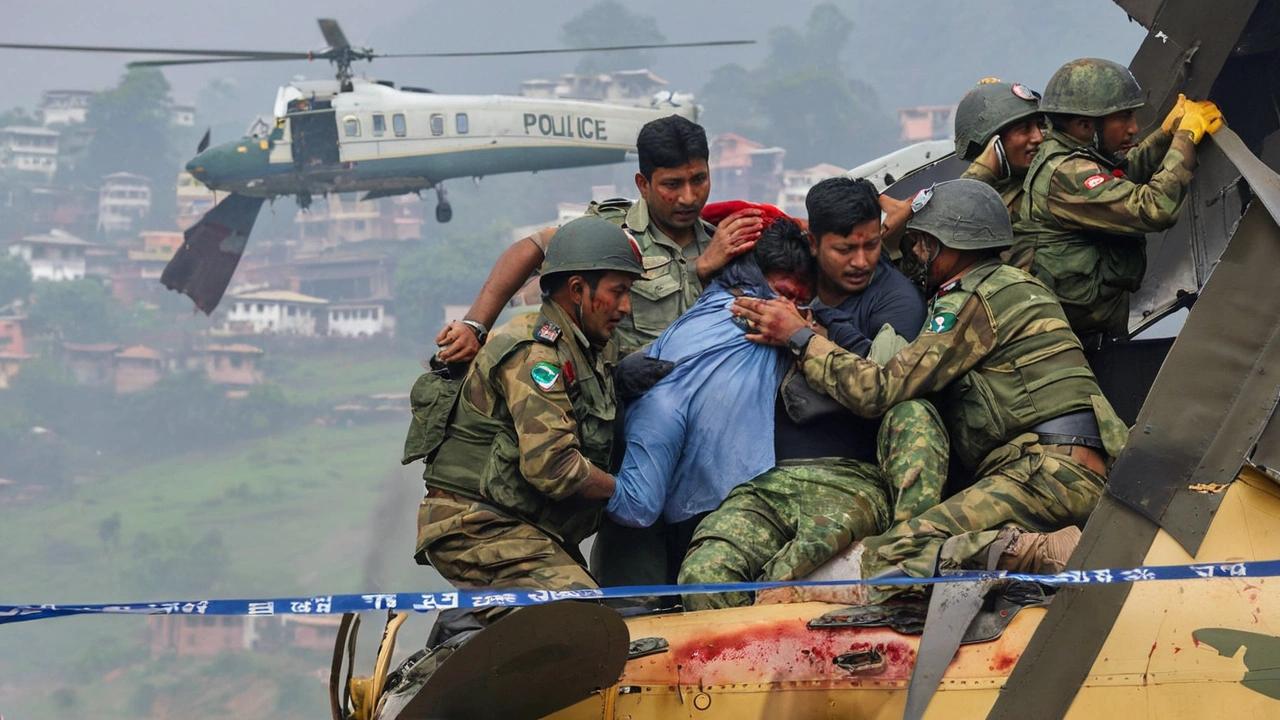Sole Survivor of Nepal Plane Crash: Captain Manish Ratna Shakya's Miraculous Recovery
25 Jul, 2024Nepal Plane Crash: A Grim Tragedy
The bustling Tribhuvan International Airport in Kathmandu became the scene of a devastating disaster when a Saurya Airlines Bombardier CRJ200 aircraft crashed shortly after take-off. The flight, which was bound for Pokhara, carried 18 people, including 17 technical staff members and co-pilot Sushant Katwal. Amidst the wreckage and ensuing inferno, a glimmer of hope emerged as Captain Manish Ratna Shakya was miraculously pulled from the cockpit, the lone survivor of this tragic incident.
The Horrific Crash
The crash happened moments after the aircraft lifted off the runway. The plane suddenly veered off course, crashed through the perimeter fence, and nosedived into a gorge before erupting in flames. Rescue workers, comprising the Nepalese army, police, and firefighters, sprang into action. In a daring rescue operation, they managed to extract Captain Shakya, aged 37, from the cockpit by breaking open a window just before the flames could engulf him. Although he sustained multiple injuries, including broken ribs and vertebra, his condition is stabilizing in a nearby hospital.
In Memory of the Victims
Unfortunately, the other 18 individuals on board were not as fortunate. The crash claimed their lives almost instantly. As rescue workers combed through the charred remains of the aircraft, the somber task of identifying and recovering the victims’ bodies began. Authorities have since sent the deceased for post-mortem examinations, and families of the victims have started arriving at the hospital, hoping to find closure amidst their grief.
Captain Shakya: The Lone Survivor’s Recovery
Captain Manish Ratna Shakya remains an emblem of resilience amidst the tragedy. Medical professionals attending to him have assured the public that despite his severe injuries, he is on the path to recovery. His harrowing escape from death has brought a sliver of optimism amid widespread mourning. Friends, family, and colleagues are rallying around him, hoping for his swift and full recovery.
A Troubling Aviation History
This crash is a stark reminder of Nepal's precarious aviation safety record. In the past three decades, the country has witnessed 27 deadly plane crashes, which have claimed over 600 lives. Nepal's challenging topography, coupled with volatile weather patterns, often makes flying a perilous undertaking. However, this recent crash has triggered an outcry for more stringent safety measures within the aviation industry.
The Civil Aviation Authority of Nepal (CAAN) has launched a thorough investigation into the crash to determine its cause. Preliminary reports suggest that there might have been technical issues with the aircraft, as voiced by the families of the deceased. The meticulous process will involve examining the aircraft’s black box, interviewing surviving members of the airline crew, and assessing the maintenance records of the ill-fated plane.
Demand for Accountability
As news of the crash spread, there was an outpouring of grief and anger from the victims' families and the general public. Questions were being raised regarding the competency and accountability of both Saurya Airlines and the aviation authorities. They demanded transparent answers and an explanation of the safety protocols in place. Rumors of potential negligence or oversight in the aircraft’s maintenance have further agitated public sentiment.
Government officials and aviation experts are under enormous pressure to provide satisfactory explanations and to take tangible actions to prevent such tragedies from recurring. Public discourse has increasingly leaned towards the necessity for immediate reforms in aviation safety standards. Calls for updating safety protocols, improving pilot training, and enforcing stringent aircraft maintenance checks are growing louder.
Meanwhile, investigations are expected to take weeks, if not months, as teams meticulously piece together the events leading up to the crash. The investigation’s findings will be crucial in shaping future aviation safety regulations in Nepal and restoring public faith in air travel.
A Community in Mourning
Kathmandu and the surrounding communities have come together to mourn the victims of this calamity. Candlelight vigils, memorial services, and community support groups are part of an expanding network of grief-sharing and comfort. The city, covered in a shroud of sorrow, stands in solidarity with the bereaved families.
The stories of the people who perished in the crash have begun to emerge, painting a poignant picture of loss. Each victim, whether they were crew members or technical staff, leaves behind a grieving family and shattered dreams. This tragedy has not only taken lives but also deeply wounded the collective consciousness of the community.
Hope Amidst Despair
In a country like Nepal, where aviation is often the only feasible mode of transportation to remote and difficult-to-reach areas, this incident underscores a dire need for comprehensive aviation safety reforms. Captain Manish Ratna Shakya’s survival has become a beacon of hope amidst the despair, a sign that human resilience can prevail even in the darkest of times.
As Captain Shakya continues his recovery, he symbolizes the potential for healing and hope in the face of overwhelming tragedy. His story is a testament to human endurance and the indomitable will to survive against all odds.
The aftermath of the Saurya Airlines crash is a somber chapter in Nepal’s aviation history, one that will hopefully spur necessary changes in the industry. As the investigation unfolds, it will be crucial for both aviation authorities and airlines to heed the lessons of this tragedy to ensure that such a disaster never happens again.
For now, the world watches as the lone survivor’s recovery brings a glimmer of hope and a renewed call for safety in the skies.

 by
by